Osteofos, Alendronate
- Introduction to Osteofos (Alendronate)
- Composition of Osteofos (Alendronate)
- How Alendronate Works
- Uses of Alendronate
- Off-Label Uses of Alendronate
- Dosage and Administration of Osteofos (Alendronate)
- Administration Precautions
- Side Effects of Osteofos (Alendronate)
- Common Side Effects: Digestive Issues, Musculoskeletal Pain
- Long-term Side Effect Considerations
- Managing and Mitigating Side Effects
- Side Effects of Stopping Alendronate
- Alendronate Side Effects: Weight Gain
- Alendronate Side Effects: Jaw
- Alendronate Eye Side Effects
- Alendronate Side Effects: Hair Loss
- Alendronate and Dental Work
- Important Precautions
- Overdosage of Osteofos (Alendronate)
- Storage and Stability
- Careful Administration Considerations
Introduction to Osteofos (Alendronate)
Overview of Osteofos (Alendronate)
Osteofos, also known in the market as alendronate, is classified under a group of drugs called bisphosphonates. It is mainly prescribed for treating osteoporosis. It works by slowing down the breakdown of bones, which helps restore the natural bone formation process. The effectiveness of Alendronatein in increasing bone density highlights its value in preventing fractures linked to osteoporosis-related changes.

Importance in Osteoporosis Treatment
- Preventing Bone Loss: Osteofos reduces the continuous decrease in bone density commonly seen in osteoporosis.
- Lowering Fracture Risk: Alendronate helps strengthen bones, significantly reducing the chances of fractures in the hip and spine.
- Affordable Treatment Option: When compared to other treatments for osteoporosis, Alendronate stands out as a cost-effective choice that leads to substantial healthcare cost savings by preventing fractures.
Scope of the Article
This article aims to discuss Osteofos (Alendronate), detailing how it works, its benefits in clinical settings, and its crucial role in treating osteoporosis. The following parts will delve into the drug's effects on the body's approaches to patient care and recent studies highlighting improvements in preventing and treating osteoporosis.
Composition of Osteofos (Alendronate)
Active Ingredient: Alendronate Sodium
Alendronate Sodium, the ingredient in Osteofos, is a powerful inhibitor of bone resorption mediated by osteoclasts. Its targeted therapeutic effects make it particularly effective in treating conditions marked by bone breakdown.
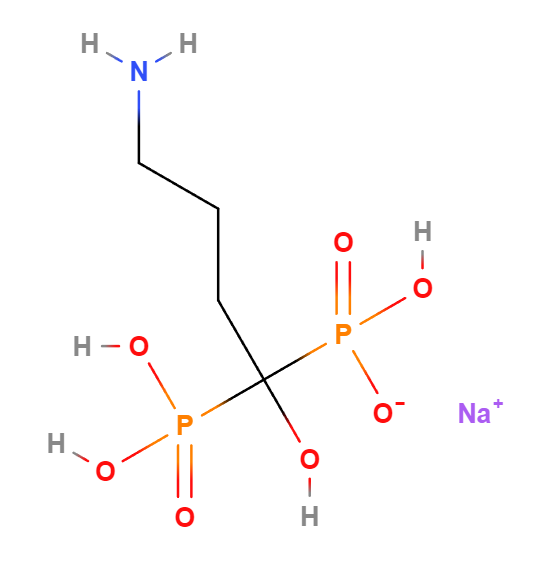
Inactive Ingredients and Their Functions
Osteofos is made up of inactive components that are essential for maintaining the drug's effectiveness, absorption, and stability. Ingredients like microcrystalline cellulose, magnesium stearate, and silicon dioxide are included to preserve the medication's quality during storage and enhance its absorption when taken.
Alendronate Brand Name
Osteofos is sold under brand names, and Fosamax is one of the most commonly known ones. While each brand may have variations, their ingredient compositions all contain Alendronate Sodium as the main active component.
Alendronate Generic Name
In the field, Osteofos is commonly referred to by its generic name, Alendronate Sodium. This practice helps maintain consistent communication in healthcare by avoiding brand-specific terms.
Ibandronate vs Alendronate
- Ibandronate is a type of bisphosphonate used similarly to Alendronate,, but it varies in how often it needs to be taken and its side effects.
- Unlike Alendronate, which is usually taken on a regular basis, Ibandronate can be taken once a month. This difference in dosing frequency doesn't compromise its effectiveness, making it a convenient option for treatment.
Prolia vs Alendronate
- Prolia, also known as Denosumab, works by focusing on RANKL, a molecule involved in bone restructuring.
- Unlike Alendronate, Prolia is commonly recommended for individuals with difficulty tolerating bisphosphonates. It provides them with an injection option instead of having to take it orally.
Reclast vs Alendronate
Reclast, also known as Zoledronic Acid, is a type of bisphosphonate given through an IV infusion. This offers a convenient choice for patients who favor less frequent dosing than the oral treatment with Alendronate.
Fosamax vs Alendronate
Fosamax, also known as Alendronate, provides similar therapeutic advantages and is frequently mentioned when discussing the medication's impacts, adverse reactions, and effectiveness in different clinical studies and medical assessments.
How Alendronate Works
Mechanism of Action in Bone Metabolism
Alendronate Sodium becomes part of the bone structure. It specifically hinders the function of osteoclasts, which are the cells that break down bones. By adjusting the activity of osteoclasts, Alendronate assists in restoring a balance in bone metabolism, ultimately slowing down or even reversing the advancement of osteoporosis.
Effects on Bone Mineral Density and Turnover
Alendronate's therapeutic benefits mainly involve boosting bone mineral density (BMD). Research shows improvements in BMD, especially in the lower back and hip areas, which are important for preventing fractures in people with osteoporosis. Additionally, Alendronate lowers markers of bone turnover, suggesting a decrease in bone breakdown rates and a strengthening of the framework.
Uses of Alendronate
Primary Indications: Osteoporosis in Postmenopausal Women and Men
Alendronate is mainly used to treat osteoporosis, a condition characterized by weakened bone strength that makes people more prone to fractures. Postmenopausal women and elderly men, who often experience bone density loss due to estrogen levels, greatly benefit from Alendronate's ability to improve bone density and strengthen bones.

Use in Treating Pagetâs Disease of Bone
Pagets disease, known for its changes in bone structure, faces a strong opponent in Alendronate. This treatment aids in regulating the bone restructuring process, lessening bone discomfort and lowering the chances of deformities linked to this long-term condition.
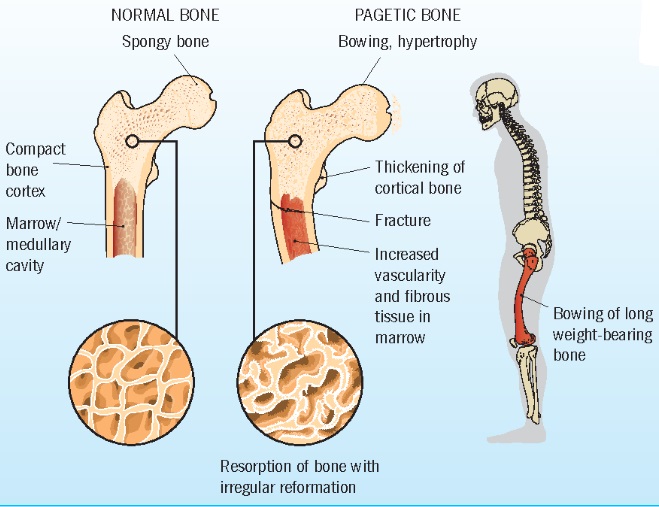
Prevention of Osteoporosis in At-risk Populations
- In the stages of treatment, doctors commonly recommend Alendronate as a preventive measure for people at higher risk of osteoporosis, especially those with a family history or health issues that speed up bone weakening.
- Considering lifestyle factors, Alendronate benefits those with habits, like prolonged therapy use, that greatly impact bone strength.
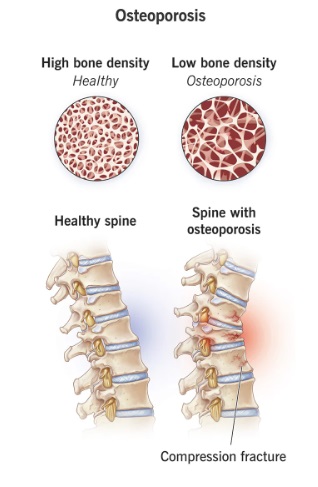
Off-Label Uses of Alendronate
Exploring Non-FDA Approved Applications
Alendronate has uses rather than just what it's officially approved for. Doctors might recommend it for issues related to bone strength and metabolism, like osteoporosis caused by steroids, especially when usual treatments don't work well.
Research Findings on Additional Benefits
Ongoing studies uncover potential advantages of Alendronate in fields where it hasn't received official approval yet. Research indicates its effectiveness in enhancing bone strength for individuals receiving cancer therapies that can impact bone density. These discoveries drive the progress of medical trials, broadening our knowledge of the benefits offered by Alendronate.
Dosage and Administration of Osteofos (Alendronate)
Recommended Dosages for Different Conditions
The treatment plan for osteoporosis differs depending on the ailment being addressed. In the case of postmenopausal Osteoporosis, the dosage is 70 mg once a week. At the same time, a higher amount may be recommended for Paget's disease based on the seriousness of the condition and how well the patient responds to treatment. It's crucial to adjust dosages for patients with varying levels of kidney function to reduce the risk of issues.
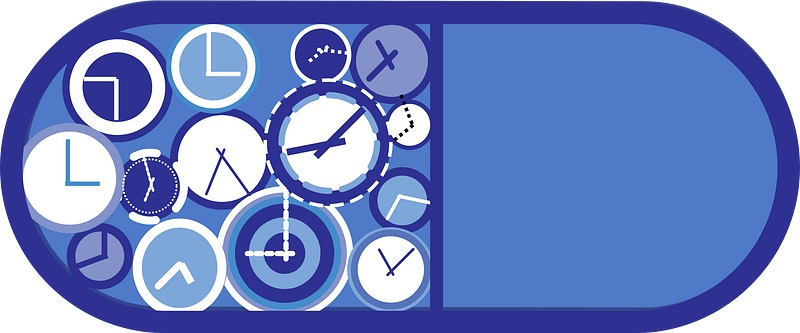
Administration Techniques: Best Practices for Efficacy
Take Osteofos with a glass of water, waiting at least 30 minutes before consuming any food, drink, or other medications to allow for better absorption. It's important to maintain a position for at least half an hour after taking the medication to avoid irritation in the esophagus or any negative effects on the stomach.
Adjustments in Dosage Based on Patient Response
Keeping track of bone mineral density and the levels of substances related to bone health can help doctors fine-tune the amount of Alendronate given to improve treatment results and reduce potential side effects. Adjusting the dosage might be needed for patients who don't respond well or experience unwanted effects.
Alendronate Dose in Elderly
When doctors prescribe Alendronate to patients, they consider their kidney function and the likelihood of side effects. Usually, they opt for doses that enhance bone density without causing too many issues with the kidneys or stomach.
Administration Precautions
Administration to Elderly: Special Considerations
As people age, they may need customized doses of medication because their bodies process drugs differently. It's important to check their kidney function before starting treatment, especially since older individuals are more prone to kidney issues that can impact how medications are removed from their system.
Alendronate Nursing Considerations
Nurses have a role in overseeing patients who are taking Alendronate. Their responsibilities include educating them on how to take the medication and ensuring they follow the prescribed treatment plan. Additionally, they keep an eye out for any possible side effects, especially those affecting the digestive and musculoskeletal systems, so they can address any concerns promptly.
Handling Precautions for Caregivers and Patients
It's crucial to handle and administer medications properly to avoid dosage mistakes and ensure safety. Caregivers need to receive training on the significance of timing and positioning when giving medication to prevent complications. Additionally, they should be able to recognize signs of adverse reactions so they can manage them promptly if they arise.
Side Effects of Osteofos (Alendronate)
Common Side Effects: Digestive Issues, Musculoskeletal Pain
Long-term Side Effect Considerations
Long-term usage of Alendronate could lead to yet serious issues, like jaw osteonecrosis and unusual femoral fractures. Monitoring and assessing the therapy is advisable to reduce the likelihood of these risks.
Managing and Mitigating Side Effects
- Adjusting the dosage or how often you take it might help reduce side effects.
- Using medications or changing your diet can assist in handling stomach-related issues.
- Keeping up with medical checkups ensures that any adverse effects are caught and dealt with promptly.
Side Effects of Stopping Alendronate
When you stop taking Alendronate, it could cause a rebound effect, speeding up bone resorption and possibly resulting in a drop in bone density. Patients must talk to their healthcare providers about a planned approach to stopping the medication.
Alendronate Side Effects: Weight Gain
Weight increase is generally not linked to the use of Alendronate. Individuals who notice alterations in their weight should explore other health or lifestyle aspects.
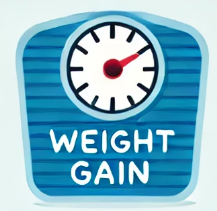
Alendronate Side Effects: Jaw
Osteonecrosis of the jaw (ONJ) is a severe complication linked to Alendronate, especially following dental treatments. Signs may involve jaw pain, swelling, and visible bone in the area.
Alendronate Eye Side Effects
Some individuals have mentioned experiencing eye-related issues, like uveitis and scleritis. Although uncommon, these conditions demand medical intervention to avert any severe complications.
Alendronate Side Effects: Hair Loss
With Alendronate, hair loss is not an occurrence and could be more linked to other health issues or treatments.

Alendronate and Dental Work
Patients taking Alendronate should tell their dentist about their medication to avoid ONJ. They might need to take precautions, such as using antibiotics or postponing non-urgent dental treatments.
Important Precautions
Interactions with Other Medications
It is essential to separate the intake of Alendronate from calcium supplements, antacids, and other drugs that impact mineral absorption to avoid diminishing its effectiveness.
Contraindications: Health Conditions That Warrant Caution
Individuals with health conditions, like ongoing gastrointestinal problems, kidney issues, or low calcium levels, are advised to steer clear of using Alendronate as it could heighten the chances of experiencing severe adverse reactions.

Precautions for Patients with Renal Impairment
Alendronate is eliminated through the kidneys. Reduced kidney function could result in its buildup in the body, increasing the chances of toxicity. Patients with renal function impairment may require dose modifications or different treatment options.
Overdosage of Osteofos (Alendronate)
Symptoms of Overdosage
Taking more than the advised amount of Osteofos may cause low calcium and phosphorus levels and intense stomach discomfort, resulting in nausea, heartburn, and irritation in the esophagus.

Immediate Actions and Antidotes
- When dealing with Alendronate, giving milk or antacids can help to bind the medication and decrease its absorption.
- In severe cases, medical treatments such as lavage might be required to prevent the drug from being absorbed further.
Long-term Health Implications
Excessive use over time may cause imbalances in mineral levels, which could lead to lasting harm to the bones and kidneys. Regular monitoring and appropriate action are essential for controlling and reducing these dangers.
Storage and Stability
Optimal Storage Conditions for Efficacy
To ensure its effectiveness, store Osteofos at room temperature in a dark place. To shield it from external elements, keep the medication in its packaging until you are ready to use it.
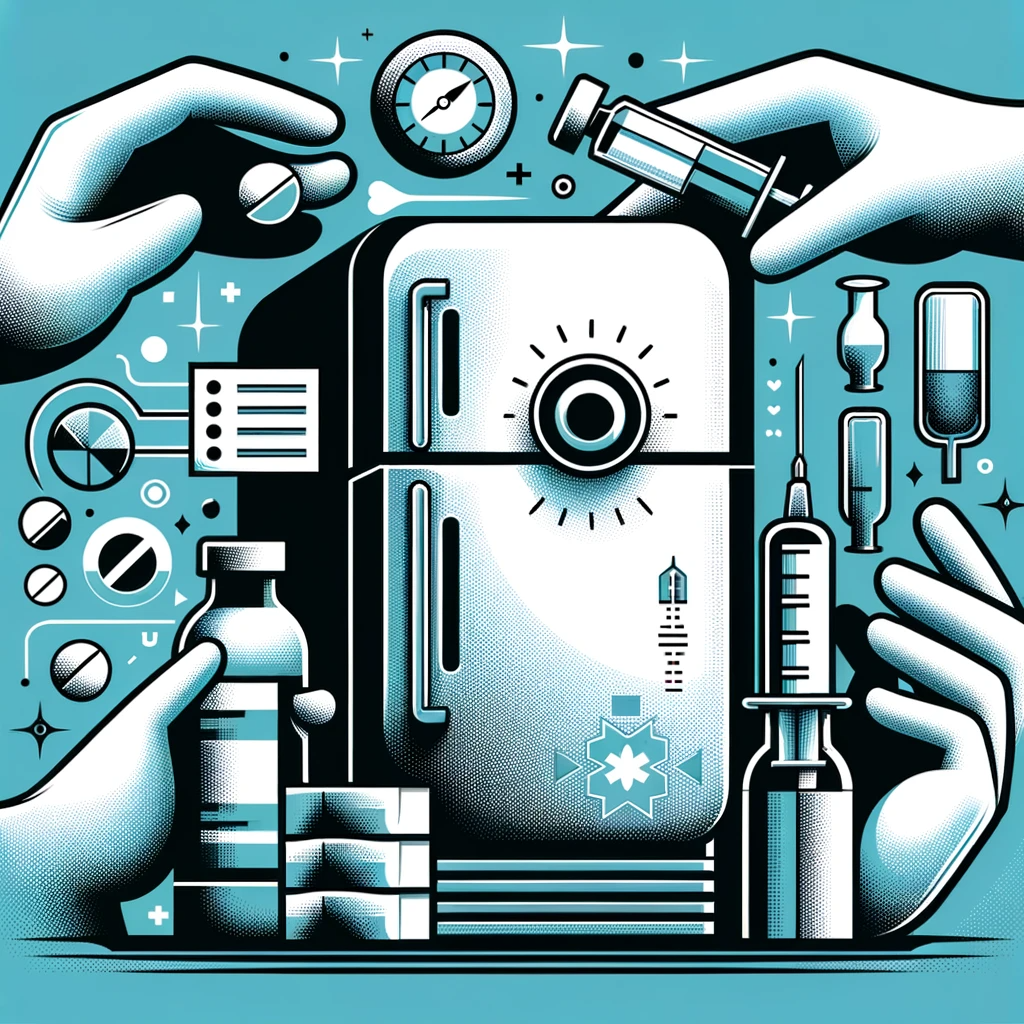
Shelf Life and Expiration Considerations
Osteofos is usually effective for three years after it is made. Patients should check the expiration date on the package. To stay safe and get the best results, throw away any old medicine.
Careful Administration Considerations
Importance of Adherence to the Prescribed Regimen
It's crucial to stick to the recommended schedule when using Osteofos to get the results you want for bone health. Missing doses can reduce the effectiveness of the medication and raise the chances of fractures.
Tips for Ensuring Full Therapeutic Benefits
- Take your medication in the morning with a big glass of water, and do so well before you have any food, drinks, or other medications to ensure it gets absorbed properly.
- Also, remember to stay upright for 30 minutes after taking the medication to prevent any stomach issues and help the drug reach your stomach effectively.
Monitoring and Follow-up Requirements
It's important to have checkups to see how the medication is affecting bone strength and to watch out for any negative reactions. Depending on these results, changes to the treatment may be needed to keep the patient safe and ensure the therapy works well.
Osteofos, Alendronate FAQ
- Can Alendronate cause teeth problems
- Can Alendronate cause hair loss
- Can Alendronate cause high blood pressure
- Can you take Alendronate with food
- Does Alendronate cause weight gain
- Does Alendronate cause weight loss
- How long does Alendronate stay in your system
- How long should you take Alendronate sodium tablets
- How does Alendronate work
- How to take Alendronate and levothyroxine
- How to take Alendronate
- How long can you take Alendronate
- What drugs should not be taken with Alendronate
- What are the long-term side effects of Alendronate
- What to avoid while taking Alendronate
- What is the most common side effect of Alendronate?
- What happens if i miss a dose of alendronate
- Why is Alendronate taken once a week
- Why does Alendronate cause joint pain
Can Alendronate cause teeth problems
Yes, Alendronate, a medication often prescribed for treating osteoporosis, may lead to problems. It falls under a category of medications known as bisphosphonates, which can disrupt the process of bone renewal, affecting the jaw area and potentially causing a condition called osteonecrosis of the jaw (ONJ). While rare, this condition is severe and involves bone loss in the jaw. The risk of developing ONJ is higher for those who undergo procedures while on this medication, have poor oral hygiene practices, or have specific existing dental issues.
Furthermore, some individuals using Alendronate have experienced dental concerns like toothaches, loose teeth, and gum inflammation. It is crucial for individuals taking Alendronate to uphold oral hygiene habits, attend regular dentist appointments for checkups, and inform their dentist about their medication usage.
Can Alendronate cause hair loss
Alendronate, often prescribed for treating osteoporosis, is not commonly linked to hair loss as a side effect. The main adverse effects of alendronate are usually related to problems (like heartburn, stomach discomfort and swallowing difficulties) muscle and bone pain and in rare instances jaw bone decay and unusual fractures in the thigh bone.
Although infrequent, isolated hair loss cases have been reported by individuals using alendronate. This side effect is considered uncommon. The connection between alendronate and hair loss lacks strong evidence or widespread mention in medical literature. If someone notices hair loss while on treatment, exploring other potential causes like nutrient deficiencies, stress, or underlying health issues is crucial, and consult a healthcare provider for appropriate guidance.
Can Alendronate cause high blood pressure
Alendronate, a medication commonly used for treating and preventing osteoporosis, is not usually linked to causing blood pressure as a direct side effect. The common side effects associated with alendronate include issues with the digestive system (such as acid reflux, stomach pain, and nausea), musculoskeletal discomfort, and, in rare cases, jaw bone problems or unusual fractures in the thigh bone. High blood pressure is not typically reported as a reaction to alendronate in clinical trials or significant studies.
If someone experiences high blood pressure, it's likely due to factors like underlying health concerns, lifestyle choices, or other medications that could impact blood pressure levels. Patients should always communicate all their symptoms and medical conditions with their healthcare provider for management and to investigate any potential interactions or side effects related to their medications.
Can you take Alendronate with food
It's best not to consume Alendronate with food. The effectiveness of Alendronate may decrease significantly if taken alongside food. To ensure absorption, taking it on an empty stomach with a full glass of water is recommended, ideally 30 minutes to one hour before eating or drinking anything other than water. This also means refraining from taking medications, vitamins, or supplements during this period to guarantee proper absorption of Alendronate.
Following the intake of Alendronate, it is advisable to maintain a position (sitting, standing, or walking) for at least 30 minutes and until after your first meal. This practice helps prevent irritation in the esophagus and ensures the medication reaches the stomach efficiently. Suppose you have dietary concerns or experience stomach discomfort when taking Alendronate. In that case, it is crucial to discuss these issues with your healthcare provider for personalized guidance on managing this medication.
Does Alendronate cause weight gain
Alendronate, mainly used for treating osteoporosis, is generally not linked to weight gain as a side effect. The common side effects of Alendronate usually involve the system (such as acid reflux, stomach pain, and nausea), muscle and bone pain, and, in rare cases, jaw bone issues or unusual fractures in the thigh bone.
Studies have not frequently mentioned weight gain as a side effect of taking Alendronate. Suppose someone notices weight gain while on this medication; it's likely due to other reasons, like lifestyle changes, existing health conditions, or the use of different drugs. It's crucial to talk to a healthcare provider about changes in weight or unexpected symptoms to identify the root cause and determine the appropriate course of action.
Does Alendronate cause weight loss
Alendronate, often prescribed for treating and preventing osteoporosis, is not usually linked to weight loss as a side effect. The primary concerns with Alendronate involve problems (such as heartburn, stomach ache, and nausea), muscle or bone pain, and, in rare instances, jaw bone issues or unusual fractures of the femur. Weight loss is not commonly noted due to using Alendronate in clinical trials.
Suppose someone notices a drop in weight while on Alendronate. This could be attributed to other factors, such as underlying health conditions, dietary modifications, or side effects from different medications. Individuals facing weight loss should seek guidance from their healthcare provider to identify potential reasons and suitable actions.
How long does Alendronate stay in your system
Alendronate has a way of moving through the body because it is like bone tissue. When you take it, it quickly sticks to the bones. It stays there for a while, affecting how the bones work. This ability to hang around in bone tissue is why Alendronate works well when taken once a week to treat osteoporosis. This also means that any bone-related side effects could last as long as the drug stays in the bones. The fact that Alendronate lingers in the bones for a long time highlights why it's crucial for doctors to carefully choose patients and keep an eye on them while they're being treated with bisphosphonates like Alendronate.
How long should you take Alendronate sodium tablets
The length of time a person needs to take Alendronate sodium tablets, commonly prescribed for managing osteoporosis, varies based on factors such as the extent of bone density loss, the likelihood of fractures, and the person's overall health condition.
How does Alendronate work
Alendronate is part of a group of medications known as bisphosphonates. It is mainly prescribed for managing osteoporosis in women after menopause and for enhancing bone density in men with osteoporosis.
How to take Alendronate and levothyroxine
When taking alendronate and Levothyroxine together, it's important to time their intake to ensure they work effectively without impacting each other's absorption. Here are some detailed instructions on how to manage both medications;
Taking Levothyroxine
- Timing: It is best to take Levothyroxine on an empty stomach, preferably in the morning, at least 30 to 60 minutes before eating or taking any other medications. This is crucial as food and certain drugs can interfere with its absorption.
- Consistency: Make sure to take Levothyroxine at the time every day to maintain consistent thyroid hormone levels in your system.
Taking Alendronate
- Timing: Alendronate should also be taken on a stomach first thing in the morning with a full glass of plain water (at least 8 ounces). After taking alendronate avoid lying down and refrain from consuming anything than plain water for at least 30 minutes ideally, up to 60 minutes.
- Interaction Considerations: Since both alendronate and Levothyroxine are absorbed best on an empty stomach and can interfere with each other's absorption, it is advisable to stagger their administration.
Suggested Schedule
- In the morning, take Levothyroxine after waking up with a full glass of water. Remember to wait for at least 30 to 60 minutes before you take alendronate.
- After you've taken Levothyroxine, wait the recommended time before taking alendronate with a glass of water. Then, avoid eating, drinking, or taking any medications for another 30 to 60 minutes.
- For the rest of the day, carry on with your daily routine and medication schedule, ensuring a significant gap between when you take Levothyroxine and alendronate to prevent any interactions.
Some Important Points
- Consult your healthcare provider for personalized advice if you're taking other medications or have specific health concerns that could impact how these drugs work.
- Regular monitoring by your healthcare provider is crucial for adjusting dosages and timings based on your response to treatment and any potential side effects.
How to take Alendronate
Following the steps when taking Alendronate is essential to ensure it works well and doesn't cause side effects. Here are some tips for taking Alendronate
Before you start taking Alendronate
- Consult a healthcare professional to ensure that Alendronate suits your health condition. Discuss any issues, such as kidney problems or low calcium levels, that could affect how you take Alendronate safely.
How to take Alendronate
- Timing: Take Alendronate half an hour before your first meal, drink, or medication. This helps with absorption.
- Water: Swallow the tablet with a glass (6 8 ounces) of plain water. Avoid taking it with any drink.
- Posture: After taking Alendronate, stay upright (sitting or standing) for at least 30 minutes. This position helps the medicine reach your stomach quickly and lowers the risk of irritating your esophagus.
- Eating and drinking: Wait at least 30 minutes after taking Alendronate before eating, drinking, or taking other medications. Having food soon can decrease how well the drug works.
Different forms of dosage
- Alendronate comes in weekly doses depending on your medical needs and as your doctor prescribes.
Special Considerations
- Remember not to chew or crush the tablet swallow it whole to prevent throat irritation.
- If you forget a dose, take it in the morning, but do not double up on doses in a single day.
Monitoring and Follow-Up
- Having checkups with your healthcare provider to monitor your bone health and adjust treatment if necessary is crucial.
Potential Side Effects
- Watch out for side effects like stomach discomfort, acid reflux and esophageal ulcers and alert your doctor promptly if you experience severe or persistent symptoms.
Following these guidelines for taking Alendronate can improve bone strength and lower fracture risks while minimizing side effects. Always adhere closely to your healthcare provider's instructions, and raise any concerns you have about your treatment plan.
How long can you take Alendronate
The length of time a person takes alendronate for treatment can differ greatly depending on factors such as the particular condition being addressed and the patient's overall risk of fractures.
What drugs should not be taken with Alendronate
Proper management is crucial when taking alendronate to avoid any interactions with other medications that might diminish its effectiveness or heighten the chances of experiencing side effects. It's important to be cautious when combining alendronate with drugs and substances such as calcium supplements or antacids, aspirin and nonsteroidal anti-inflammatory drugs (NSAIDs), other bisphosphonates, proton pump inhibitors (PPIs), various foods and beverages, corticosteroids, and selective estrogen receptor modulators (SERMs).
What are the long-term side effects of Alendronate
Alendronate, a medication for managing osteoporosis, may lead to various long-term side effects, mainly when used for an extended period. Although it effectively improves bone density and lowers the risk of fractures, patients and healthcare providers need to be aware of the long-term negative impacts. Let's take a look at some of these side effects:
- Gastrointestinal problems
- Muscle and joint discomfort
- Osteonecrosis of the Jaw (ONJ)
- Unusual fractures in the thigh bone
- Low levels of calcium in the blood
- Kidney health concerns
- Effects on the immune system.
What to avoid while taking Alendronate
When using alendronate, a medication commonly prescribed for osteoporosis treatment and prevention, it's crucial to keep precautions in mind to maximize its benefits and reduce potential side effects. Here are a few important considerations:
- Refrain from lying down after taking alendronate
- Avoid mixing it with other medications simultaneously
- Be cautious with certain beverages
- Steer clear of consuming calcium-rich foods close to your dosing time limit
- Smoking and excessive alcohol intake
What is the most common side effect of Alendronate?
The primary issue that people may experience when using alendronate, a drug prescribed for osteoporosis treatment, is related to the system. These problems may involve stomach pain, heartburn, irritation in the esophagus, feelings of nausea, and changes in bowel movements like diarrhea or constipation. How individuals take the medication can impact these symptoms; failing to adhere to guidelines such as drinking a full glass of water and staying upright for at least half an hour after taking the medicine can heighten the chances of facing these discomforts.
What happens if i miss a dose of alendronate
If you forget to take a dose of alendronate, how you handle the missed dose will depend on whether you take the medication on a daily or weekly schedule.
If you are taking alendronate daily
- Take the missed dose in the morning when you remember. If you realize it later in the day, near your next scheduled dose time, skip the missed dose and continue your usual dosing routine the subsequent morning void, taking two doses in one day to compensate for missing one.
If you are on an alendronate schedule
- If there is still time before your scheduled dose, take the missed dose as soon as possible after remembering. If it's close to your dose (within 1 or 2 days), skip that missed dose and resume your regular weekly routine. Remember not to double up on doses within the week.
Sticking to a schedule when taking alendronate is crucial for effective bone density management. Setting reminders or discussing alternative medication options with your healthcare provider can be beneficial if you frequently miss doses due to scheduling conflicts.
Why is Alendronate taken once a week
Alendronate is often recommended to be taken a week due to how it works in the body and its impact on bone health. The main reasons for this schedule include:
- Its extended duration of action
- Strong attraction to bones
- Ensuring patients adhere to the treatment regimen
- Minimizing potential side effects
Why does Alendronate cause joint pain
Alendronate, a medication often prescribed for osteoporosis treatment, may lead to pain as a side effect despite the precise reasons remaining unclear. Here are some potential factors that could contribute to this phenomenon:
- Inflammation Response
- Bone Stress
- Activation of the Immune System
- Build-up of Microscopic Damage




















